What Is Door?
Important Point
There are different types of doors used in homes and buildings. Doors are one of the necessary assets of any house, not just safety.
But they also develop the look of the home from the outdoor selection of door type based on the type of building, home, and its design of use.
There are different door types available to build your home entry attractive. A-frame used for giving extreme to inside or outside as to a home, cupboard, etc.: most doors turn on the hook.
Types of Doors
- Types of Interior Doors
- Flush Doors
- Raised Panel Doors
- Shaker Doors
- Beadboard Doors
- Louvered Doors
- Double Doors
- Sliding Doors
- Bypass Doors
- French Doors
- Sliding French Doors
- Pocket Doors
- Glass Doors
- Frosted Glass Doors
- Mirrored Doors
- Barn Doors
- Bifold Doors
- Accordion Doors
- Dutch Doors
- UPVC Door
- Folding Door
- Metal Door
- Blast Proof Door
- Types of Exterior Doors
- Wooden External Doors
- Fibreglass External Doors
- Composite External Doors
- External Bifold Doors
- Aluminium External Doors
- External Patio Doors
- Victorian External Doors
Also Read: What Is Standard Door Size | Standard Door Height | Standard Door Width | Standard Door Frame Size
Interior Doors
Interior doors are the doors that supply access to the rooms inside a home. They do not supply access privacy to the people.
Types of Interior Doors
Here, the 22 different types of interior doors are as follows.
1. Flush Doors
A flush door is a door that sits flush with the door frame, unlike a standard door that is set back in the frame. Flush doors have smooth, flat surfaces on both sides, with no visible panels or ornamentation.
They are typically made of a solid or hollow core, then covered with a veneer or laminate material, such as plywood, MDF (medium-density fiberboard), or HDF. Flush doors are resistant to dust, heat, and noise. Flush doors are different from paneled doors, which have panels within an outer frame.
Flush doors can have a beautiful design, with decorative embellishments and intricate wood veneer that gives the doors more depth.
2. Raised Panel Doors
A raised panel door is a cabinet door with a center panel that is slightly higher than the surrounding wood. The center panel is thicker than the outside edges of the panel.
Raised panel doors are often made of solid wood or wood veneer. They are associated with traditional kitchen styles and are considered formal designs. Raised panel doors are popular because they add a touch of elegance to any kitchen design.
They are also considered practical for interior and kitchen cabinet applications.
3. Shaker Doors
Shaker doors are a style of door that are characterized by their simplicity and clean lines. They feature a flat center panel surrounded by a raised wooden frame.
Shaker doors are often symmetrical and have minimal detailing or profiling. They are traditionally used for kitchen cabinet doors. Shaker doors are believed to have originated from the Religious Society of Friends, also known as the Quakers, which valued efficiency and simplicity.
Carpenters and joiners call these “stile and rail” designs because it refers to a technique in woodworking. Shaker cabinets are characterized by their durable all-wood construction, visual simplicity, and affordability.
4. Beadboard Doors
Beadboard is a type of wood paneling that is often used on cabinet doors, walls, and wainscoting. It features long, continuous vertical grooves and raised beads spaced every inch or two.
Beadboard is typically made from solid oak, pine, composite, fir, or cedar. Beadboard is a traditional style of paneling that is constructed of evenly spaced interlocking wooden planks. The detailing in beadboard panels can add an antique country feel to any room.
Its simple aesthetic works well with farmhouse, transitional, and classic design styles. Beadboard cabinets are easy to spot when used as a kitchen cabinet door choice. There is a basic 4-piece frame with a center insert that houses the beadboard itself.
5. Louvered Doors
A louvered door is an interior door with horizontal slots or blades called louvers. The louvers are adjustable and can be used to control air flow, light, and visibility through the door.
Louvered doors are often used as bifold doors in small closets or as sliding doors in a bedroom or bathroom. Louvered doors maintain air circulation, even when closed, keeping any mustiness at bay.
This feature is essential for preventing humidity around clothing, food, or toiletries. Louvered doors have more ridges and hard to reach places than a flat panel door, which can make cleaning challenging.
6. Double Doors
Double doors are a set of two doors that are placed side-by-side within the same frame. The doors are hinged on the outside and meet in the middle of the opening when closed.
Double doors are intended to allow two-way traffic to pass through an opening, avoiding bottlenecks. Some people use the term “French doors” when talking specifically about patio doors or doors that feature glass panels from top to bottom.
French doors consist of two main doors that open from the center, swinging outwards or inwards. Double doors can expand your entryway, elevate your exterior entrance and architecture to be more welcoming, and invite more light inside since there’s an extra entry for windows.
7. Sliding Doors
A sliding door is a door that opens horizontally by sliding along a track. Sliding doors are usually mounted on top of a track below or suspended from a track above.
They are made up of one or more panels that move along the track, guided by rollers or bearings. Sliding doors are a good choice for rooms that don’t have much space because they don’t block any outside space.
They are also good for expansive wardrobes. Sliding doors can be called sliding glass doors, sliding glass walls, multi-slide patio doors, or pocket doors. Ashby Lumber
8. Bypass Doors
A bypass door is a type of hinged door that slides along a track to open and close. Bypass doors are made up of two sliding doors that open and close by “bypassing” each other on their respective tracks.
This means that the doors will not cover the wall next to the frame when opening. Bypass doors are most commonly seen in closets, but they can also be used as room dividers, patios, and bathroom doors. Because at least half of the opening is always covered, they are more often used for specialized applications rather than just connecting two rooms.
Bypass doors are available in similar standard sizes as bifold and pivot doors. They typically measure 80” to 81” and 96” tall and accommodate horizontal openings from 48” up to 192”.
9. French Doors
French doors are double-hinged doors with a central frame and multiple see-through panels. The two sections of the door are hinged on both sides of the frame.
When both doors swing open, the entire doorway is clear, free of a center post. French doors are also known as French windows. They originated in France in the 17th century as large windows that opened up to balconies. The name “porte-fenêtre” is French for “door window”. French doors are often used as exterior doors that open onto a garden, patio, or conservatory.
They allow lots of natural light to enter a home and provide a great view of the outdoors. Interior French doors are used to bring in more light. French doors are different from standard patio doors in that the lower rail of a French door is generally wider than the top and sides.
10. Sliding French Doors
Sliding French doors combine the wider, traditional swing frame of French doors with the operation and function of a sliding door.
Sliding French doors have two door panels that slide past each other on a track. They are a popular choice for homes and buildings because they provide a wide opening and allow for maximum ventilation. Sliding French doors are considered one of the best home improvement techniques.
Sliding French doors are also referred to as gliding doors. They have the same aesthetic appeal as standard French doors, but leave your floor space free for furniture and walkways.
11. Pocket Doors
A pocket door is a sliding door that disappears into a compartment in the wall when fully open. Pocket doors are a space-saving solution for interior design.
They are often used in small rooms or tight areas where there isn’t enough room for a standard hinged door. Pocket doors can travel on rollers suspended from an overhead track or on tracks or guides along the floor.
They can come in single doors or in pairs, depending on the size of the opening. Pocket doors were popular in the late 1800s, especially in Victorian houses.
They had a resurgence of popularity in the 1950s. Pocket doors cost anywhere from $60 to $1,000, depending on the size, type of material, and style.
12. Glass Doors
Glass doors are doors made of glass. They usually have frames made from wood or metal, but modern glass doors may also have frames made from special materials like vinyl.
Glass doors can be a safety hazard if they are not installed properly or if they are not used with caution. Small children and pets can easily run into them and get injured.
Glass doors can also be a security risk as they can be easily broken into. Glass doors can also help maintain insulation and ventilation in an area.
13. Frosted Glass Doors
Frosted glass is glass that has been made opaque or semi-transparent. The glass is etched with acid or sandblasted to create a pitted surface on one side of the pane. This scatters light that passes through the glass, making it translucent and blurring images. Frosted glass is often used for privacy in bathroom windows and shower doors. It also hides fingerprints and soap better than clear glass. Frosted glass is more expensive than other types of glass, especially when custom sizings, designs, and installation are factored in.
14. Mirrored Doors
Mirrored doors are a type of closet door that slide along tracks to open and close. They are an alternative to traditional paneled doors. Mirrored doors provide a reflective surface for trying on clothes and jewelry.
They also reflect light, making a room appear larger and brighter. Mirrored doors can be customized with a bevel or frameless option. Mirrored doors can be a practical addition to a room, allowing you to check your appearance without needing a separate mirror.
They can also serve as elegant access to closets.
15. Barn Doors
Barn doors are large, sliding doors that are named after the large doors used in barns and other agricultural buildings. They are made up of two large wooden panels attached to rollers that slide along a metal track above the entryway.
Barn doors lie flat against the wall on the outside of the opening and do not require hinges or a door jamb to function. Barn doors are different from a swinging door because they don’t require hinges on the side and a door jamb to function. Instead of hinges, a barn door has two rollers attached to the top of the door which roll along a track.
Barn doors have become increasingly popular in recent years. They are easy to operate and you don’t have to worry about them swinging shut unexpectedly. This makes them perfect for rooms that you have to walk in and out of with your hands full, such as a laundry room.
16. Bifold Doors
Bifold doors are a type of door system that consists of multiple door panels hinged together in a way that allows them to fold up neatly when opened. Bifold doors are usually made from four panels that fold at the middle.
They run on rollers that roll along a caster track. Bifold doors are often used on extra-wide doorways, like closet doors, so the owner can view the entire contents of the closet at once. They are also commonly used in areas with limited space, where they can provide a large opening to outdoor areas.
Bifold doors are also known as folding-sliding doors. They can also include a standard-style door at one end, which you can use to go in and out without having to fold the panels.
17. Accordion Doors
Accordion doors are a type of sliding door that folds into itself, accordion style. They are made up of multiple panels connected by hinges and can be folded or expanded to open or close a doorway.
Accordion doors are also known as folding doors or concertina doors. Accordion doors are space savers because they don’t require an area to swing open.
They work well in restricted spaces because they don’t pose as an obstruction when they need to be opened. Accordion doors can also function as room dividers.
Accordion doors are a popular choice for businesses looking for an efficient way to manage space and create seamless transitions between rooms.
18. Dutch Doors
A Dutch door is a door that is split in half horizontally. The top half of the door can open while the bottom half remains closed.
The design allows for ventilation and light while still providing a barrier for animals or children. Dutch doors are also known as stable doors, double hung doors, half doors, or split doors.
They are secured together with a latch that allows homeowners to keep the door as one when needed. The design originated in the farmlands of the Netherlands. It was intended to allow fresh air to circulate through the home while preventing pests and animals from making their way inside.
19. UPVC Door
UPVC door is a replacement for a wooden door. It is made of fully recyclable concrete, in keeping with our green living, either like plastic or glass.
It has different types of e.g., gold in high need today. It is mainly worn in the home, bathroom, and garden.
Advantages of Upvc Doors
- The UPVC Door has many expert and limited cons, pros are-
- It keeps a house secure by multipoint locking.
- The contract is never to discolor.
- The UPVC door looks excellent because of its various color and sizes.
- It is firm and water fixed.
- Power and low cost at the same time.
- You can mate its energy better thermally.
- It is durable and maintenance-free.
- The interior pane U-value is quite low.
Disadvantages of Sliding Doors
- The sliding doors include steel, wooden, and glass cover to which steel rollers are stable.
- These steel rollers move along a tracked supply at the top and bottom.
- It has one cover based on the opening possible.
- In olden times, the siding doors of steel and wood were often used for the broad opening of workshops; etc. the installation was not a cake.
- It can become an identity magnet.
20. Folding Door
Folding doors are worn singly so that two rooms can be used together as differently as per the need. They are again used in a room opening to gardens, court, gallery, etc.
Folding it is also a “BI-FOLD DOOR”. Most of them are made of wood, bamboo, aluminum, or PVC. A folding door can be as good as a used door.
It gives great design choices, such as openly moving and cabinet-hugging. Almost the place of a folding door is outside.
Advantages of Folding Doors
- The folding door allows for a dream living space to be designed.
- It has limited sealing technology which makes the door waterproof and saves the home.
- You can also add fingerprint choice for safety.
- Its opens with just a flick of the wrist.
- It can design the illusion of a big home and opens spaces up to 90%.
Disadvantages of Folding Doors
A folding door has laborious impress and reviews way too much sunlight into your house.
21. Metal Door
As the name submit, the metal door is made of metal. It has a protracted functional life with dimensional, skill, and big-name impair support.
This type of door is a composite building of hollow metal doors. The door is circular in tight-fitting linen metal, having tightly folded joints to block air so that the interior of the door does not ignite.
Advantages of Metal Doors
Mental door supplies the following benefits:
- This door is easy to handle.
- It can only be fixed on a door frame. With strong and easy fitting.
- Having squall resistant item, it can be as stylish as a wooden door.
- The metal door comes in a different design. The fire-rated metal door is a great way to build extra light in a room and move additional safety.
- A sheet metal door is a dependable door made of metal pieces with a lock and a code.
- It is strong with different designs and decorations and also chemically durable.
- Real wood quality effects are the reason supporting the gain of a metal door.
Disadvantages of Metal Doors
The disadvantages of a metal door are:
- It has a rusting trouble
- It cannot give a building design view.
Advantages of Composite Doors
- A composite door is important for its different items.
- It has a stainless steel material which is limited to the buyers- market.
- Safety is one of the main reasons for buying a complex door.
- The um locker is ideal for the coastal place.
Types of complex doors with PVC-u thermal slots for extra power saving.
- In another way. It is up to six times more power rich than a standard door by making simple part
- To keep the room current of air.
Disadvantages of Composite Doors
In spite of having so many advantages, the composite door has some difficulties too, which regard the following:
- Tend to be more costly than the other doors.
- However, they mimic wood, but they still do not boast of the normal would finish.
22. Blast Proof Door
Blast-proof doors are utilized in basic power plants, chemical industries, and solutions where there is a risk of a blast.
The blast-proof doors are made of steel and have the capability to protect human lives through a blast. Blast-proof doors are also used in banks and in security deposit lockers.
Exterior Doors
Exterior doors are the doors that supply access to the interior of a house. The outside doors are generally huge and designed.
The outside doors supply security to the people and home inside the home and thus it has excellent lock systems.
Types of Exterior Doors
Here, the 7 different types of exterior doors are as follows,
1. Wooden External Doors
Wooden external doors are doors that lead to outside spaces, such as garages and porches. They are usually made of wood or woodgrain cores surrounded by layers of steel or metal for security and temperature control.
Exterior doors are thicker, stronger, and more weather-resistant than interior doors. Wooden external doors are typically made with solid wood construction for strength and security. They are also fully customizable when it comes to finish.
Wooden external doors can be made from a variety of natural woods, such as softwoods like pine or hardwoods like oak or maple. Solid oak is a popular choice for external hardwood doors.
Wooden external doors can give your home a warm appearance and provide good insulation.
Advantages of Wooden External Doors
Wooden doors have lots of appeal benefits given below:
- Wood is a concrete that is easy to work on.
- Strong wooden board PVC glass door is eco-friendly, soundproof, and waterproof.
- We can use it as a safety door coming door.
- A wooden door has an easy fitting, smooth surface, master sculpture, and is strong.
Disadvantages of Wooden External Doors
The disadvantages to these are
- All the wooden door has some
- It requires care and supply to keep it complete at its point.
- A wooden door should be fixed before installation.
- Because of its heavy concrete, a wooden door may sag extra. Thus, it requires updating its central and frame.
2. Fibreglass External Doors
Fiberglass exterior doors are made from two large molded sides with a polyurethane foam core in the center. The core insulates the door against extreme temperatures.
The doors are also clad with a fiber-reinforced polymer and covered with an artificial grain to make them look like wood. Fiberglass doors are durable and energy-efficient. They won’t warp, rot, shrink, or swell like wood doors.
They also require less maintenance because they aren’t prone to rusting. However, fiberglass doors are one of the more expensive options on the market. The material is also difficult to trim, so it’s not well-suited for exterior doors that aren’t standard sizes.
3. Composite External Doors
Composite doors are external doors made from a combination of materials, including PVC, timber, insulating foam, and GRP (glass reinforced plastic).
They are designed to appear as wooden doors, with an attractive wood grain. Composite doors are made in three parts: an outer frame, subframe, and solid timber core. The materials are molded together to create a hardwearing, long lasting, and good-looking door. Composite doors are energy efficient and can keep cold air outside and prevent heat loss.
They can also insulate any property and lower your bills during the winter. Composite doors are designed to last years after wooden frames have deteriorated. They will never absorb moisture, splinter or rot like wood door frames, or rust like metal door frames.
4. External Bifold Doors
External bifold doors are doors that fold up like a concertina. They are made up of three or more panels that are connected with hinges on the sides. When closed, they create the look of a wall of glass.
When opened, the panels fold back on top of each other and stack neatly. External bifold doors are most commonly used as doors between the back of a home and the garden. They are also known as folding sliding doors or concertina doors. External bifold doors are space-efficient because they are pushed to one side of the doorframe.
In contrast, exterior french doors open outwards on their hinge, which requires room in your patio or garden for the doors to sit.
5. Aluminium Exterior Doors
Aluminum exterior doors are made from solid aluminum sheets and a thermal insulation material, often plastic. The doors also use an aluminum thermal frame to help keep your home energy efficient.
Aluminum doors are a contemporary solution for your home that is particularly easy to maintain and extremely durable. They can withstand extreme weather conditions and do not rust, which makes them very low maintenance.
They also have excellent acoustic capabilities, which means they are sound-resistant and can help keep outside sounds from penetrating your home. Some disadvantages of aluminum doors include that they will oxidize, which appears as white residue and pitting.
Aluminum can also be water stained easily and can corrode quickly if suitable precautions against electrolysis are not taken.
6. External Patio Doors
External patio doors are doors that lead to outdoor spaces, such as gardens or patios. They are usually larger than regular doors and have several glass panels to allow natural light and warmth into the space.
7. Victorian External Doors
Victorian external doors were typically paneled and elaborately decorated. They were surrounded by a door frame with an impressive architrave that matched the door.
The door frame was sometimes painted or grained to appear more expensive. Victorian external entry doors were usually crafted from solid oak and featured elaborate framing that often included stain glass sidelights, and sometimes stained glass panels on the door itself. For urban houses, brass was used more often for door furniture than wrought or cast iron.
In the early Victorian period, exterior paintwork including doors, door frames, and windows tended to use colors such as browns, greens, and grained wood effects, and then finished off with a varnish.
What Is a Composite Door?
A composite door is made from a combination of materials to create a door that is strong, weatherproof and comes in a range of strong colours. A composite is a material or item made from combining a selection of materials – by combining those materials, the new material is stronger than the individual components.
What Is a French Door?
A french door is a door of light construction which has glass panes extending for most of its length. They are usually fitted as a pair instead of a single door and french doors are sometimes refered to as French windows.
What Is Flush Door?
A flush door comprises a single piece with a wood veneer, MDF or laminate outer layer, attached with an adhesive. Compared with stile and rail, or panel doors, flush wood doors offer fewer options for customization. However, their simpler construction doesn’t mean they can’t be attractive and on-brand.
What Is Considered a Door?
A door is a hinged or otherwise movable barrier that allows ingress (entry) into and egress (exit) from an enclosure. The created opening in the wall is a doorway or portal. A door’s essential and primary purpose is to provide security by controlling access to the doorway (portal).
What Is a Pre Hung Door?
A prehung door is a door that’s sold by the manufacturer “ready-to-go.” These slab doors already come with hinges attached to a three-sided frame and, while they may need some additional features, are generally sold as a complete package.
What Are Composite Doors Made Of?
A composite door is made up of a variety of materials, most commonly including uPVC, foam, wood, and GRP (glass reinforced plastic). The combination of these materials ensures that the door excels in a wide variety of areas.
What Are Doors Made Of?
There are three basic material types for entry doors: wood, fiberglass, and steel. Each have their own benefits.
What Is Upvc Door?
What are uPVC front doors? uPVC front doors are made using a fully insulated steel frame as their core, which is then covered in Unplasticised Polyvinyl Chloride. The process of encasing the steel in the other materials creates a door that is strong and durable.
What Are Fire Doors Made Of?
Fire-rated doors are constructed of materials that work together to slow or stop the spread of flames, smoke and, in certain applications, radiant and conductive heat transfer. Common materials include wood, steel, fiberglass and fire-rated glass—or a combination of these materials.
What Are Interior Doors Made Of?
Engineered or solid wood (or occasionally MDF) makes up the stiles and rails; they are then held together with glue and dowels. Panels are usually MDF and have crisper milled details than molded doors; their skins are either wood veneer or a smooth layer of MDF.
What Is a Glazed Door?
A door constructed with glass panes, shaped to particular size and pattern is called the glazed door. They are hard but delicate and used mostlyinside as architectural features in new building and renovation.
What Is the Door Called?
A door opening is called a doorway. What is the top of the doorway called? add. The top of the doorway is called the head, door header or door head.
Types of Aluminium Doors
Aluminium door types trending now!
- Slide and Fold.
- Aluminium Sliding Doors.
- Casement Doors.
- Tilt and Slide.
What Is Interior Doors?
: a door inside a building : a door that connects rooms.
What Is a Double Hung Door?
What are double hung front doors? They are doors like this picture below . . . They’re like French Patio Doors, but instead of being in the back of the house they are in the front as entry doors. These entry doors are beautiful, regal, and open wider to allow bigger breezes and ease of entry.
What Is Molded Composite Door?
Composite Doors are a relatively new technology made of a variety of synthetic materials molded together. They may be made of particle board, glass fiber and are often filled with foam. They are then covered with a veneer of glass inforced polymer that can look like wood grain or have a smooth glossy finish.
Like this post? Share it with your friends!
Suggested Read –
- What Is Linear Measurement Surveying | Types of Linear Measurement Surveying
- What Is a Brick Bat Coba | Procedure of Brick Bat Coba Waterproofing | Advantages & Disadvantage of Brick Bat Coba Waterproofing
- Concrete Release Agent | Functions of Releasing Agents | Types of Concrete Release Agent | Advantages of Release Agent | Concrete Form Release Oil
- Difference Between Primer and Undercoat | What Is Undercoat | What Does Undercoat Paint Do | Why Use Undercoat | Is Undercoat the Same as the Primer
- What Is PPC Cement | Uses of Portland Pozzolana Cement | Types of Pozzolana Materials | Properties of Portland Pozzolana Cement | Advantages & Disadvantages of Portland Pozzolana Cement
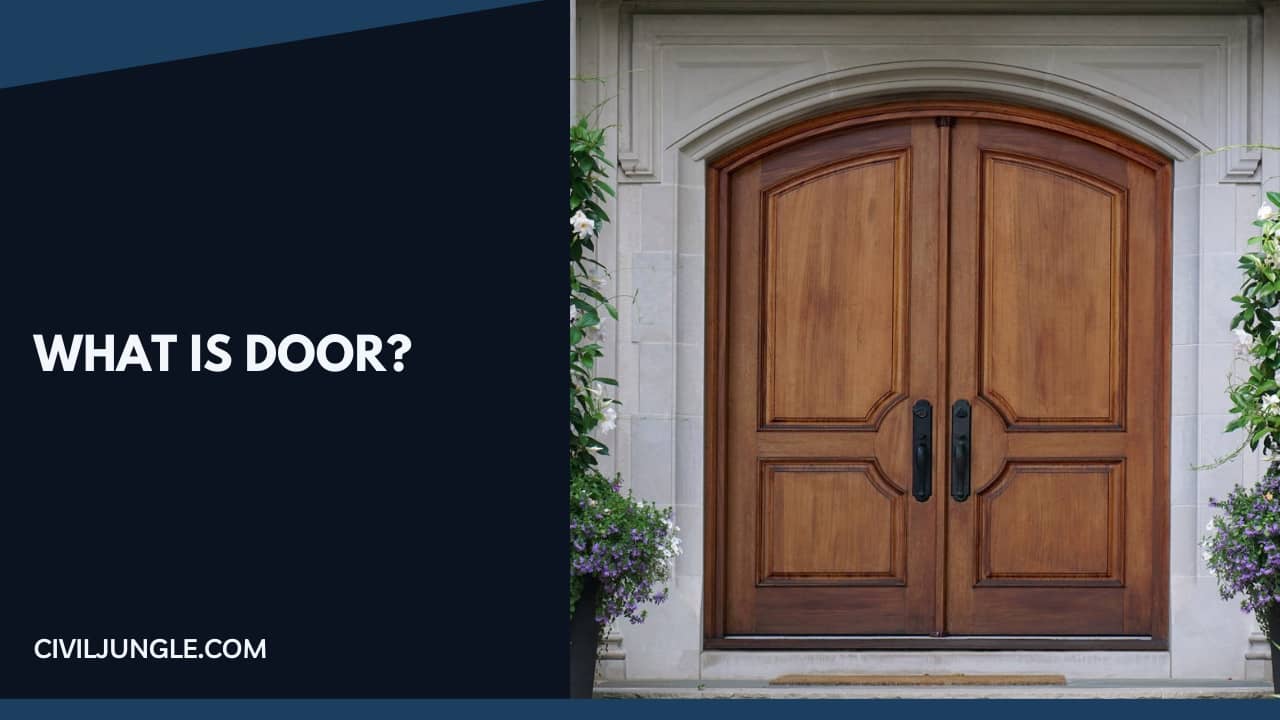
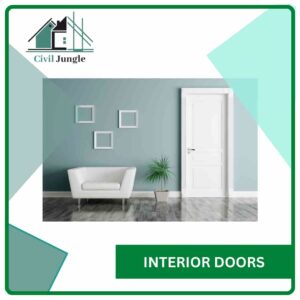
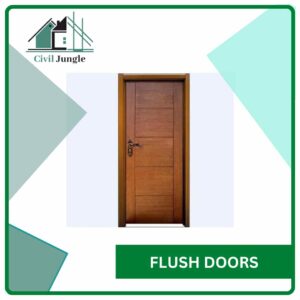
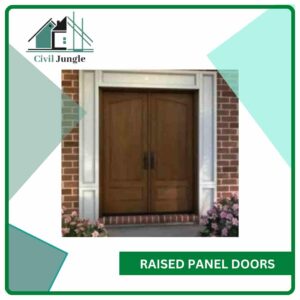
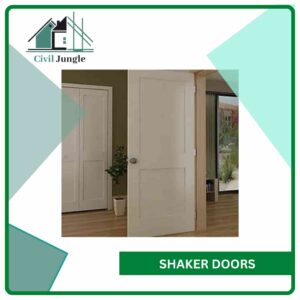
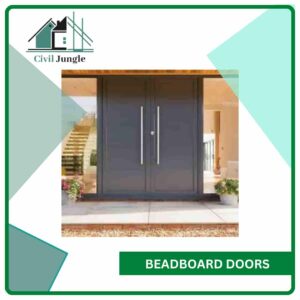
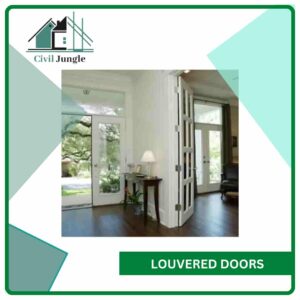
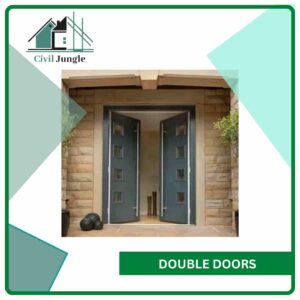
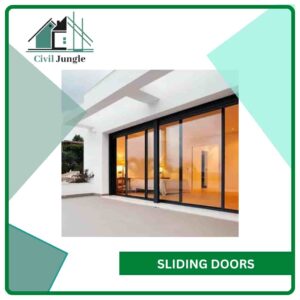
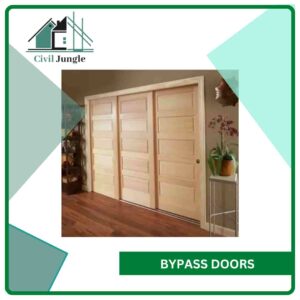
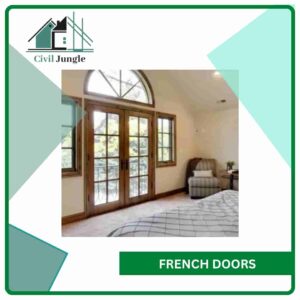

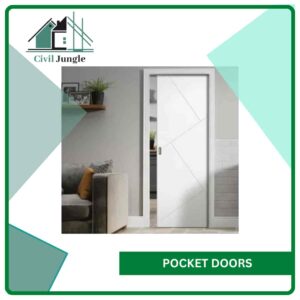

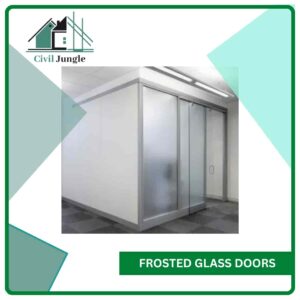
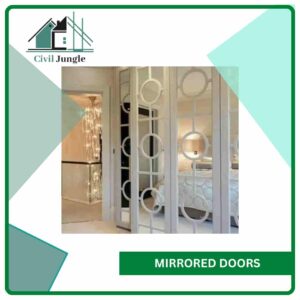
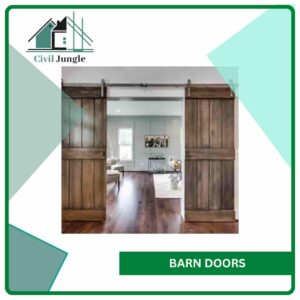
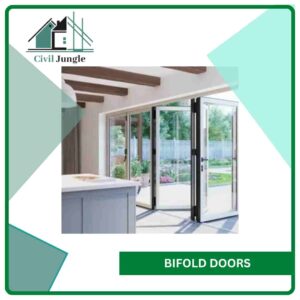
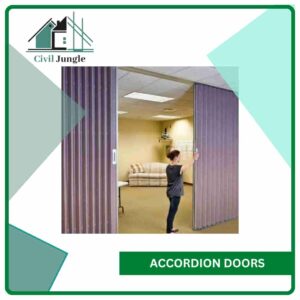
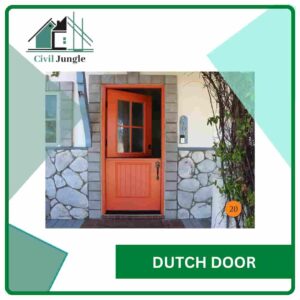
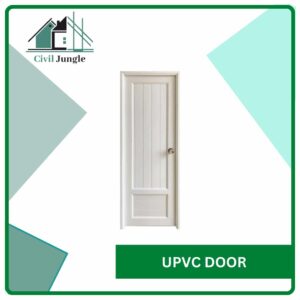
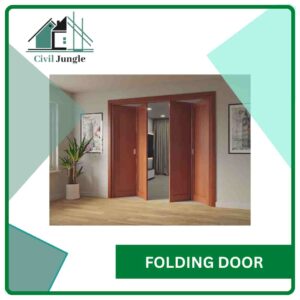

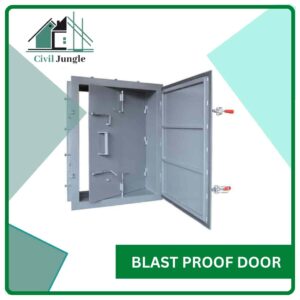
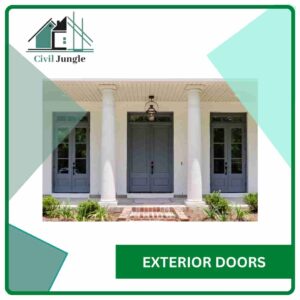
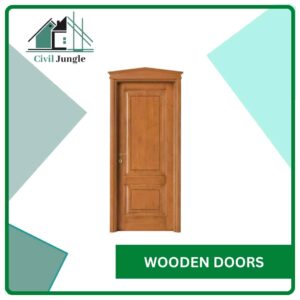
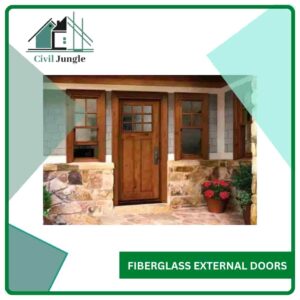

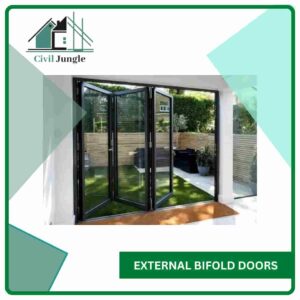

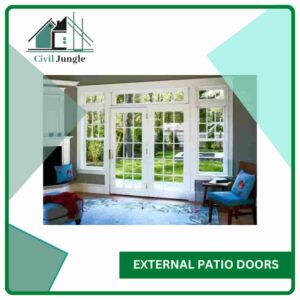


Leave a Reply